Photo
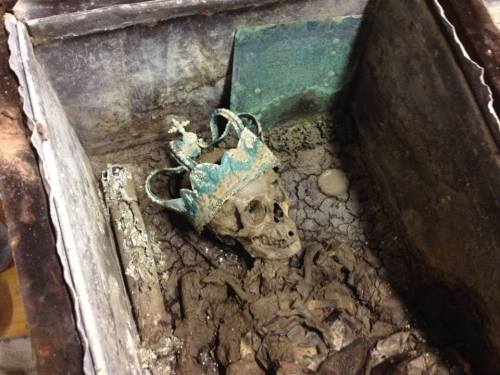
sashastergiou: Shortly After Exhumation on the Acropolis. The...
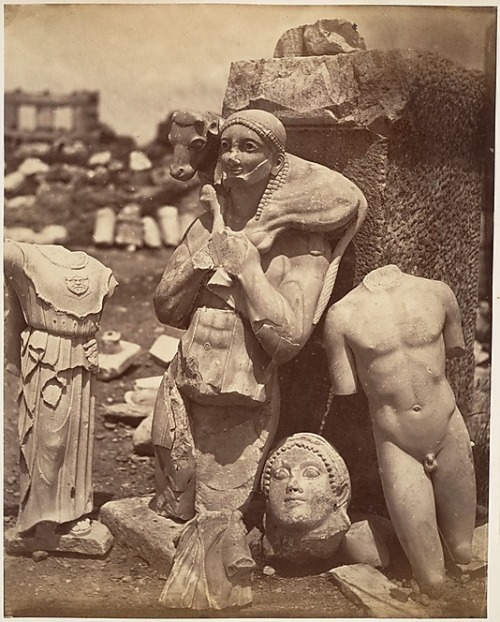
morbidfashion: xenopheles: buttlid: dutchbag: babyslime: cyp...
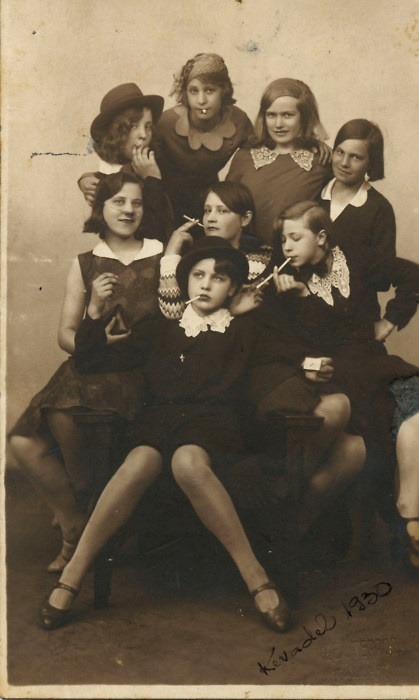
1930's Teen Delinquents
i.e. life role models
I'm just gonna reblog this again because it's one of my favorite pictures ever.
That girl in the chair seems like such a badass I bet she was the leader of the crew.
I want to write about these girls.
When I was a teenager my mother found my grandmother's (her mother) school scrapbook. It included things like photos, notes, and a two page spread of every demerit she ever received over the course of her formal education. Each of them set aside with little tags like she was so fucking proud of them. They were all for things like, "Unladylike behavior" or, "Skirt too short" or, "refuses to listen to authority". I loved that spread so much.
I always have to reblog this.
i would've dated the shit outta the babe in the chair
u beautiful pplI wistfully sigh and WISH my family members had been delinquents. Sadly they were all Good Little Girls…. Oh, to have an old flapper for a grandmother!!
Reblogging for the commentary and because their dresses are wonderful.
thecivilwarparlor: Effects of Canister Shot in the Civil...
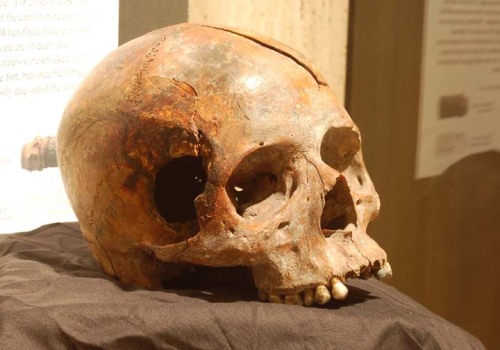
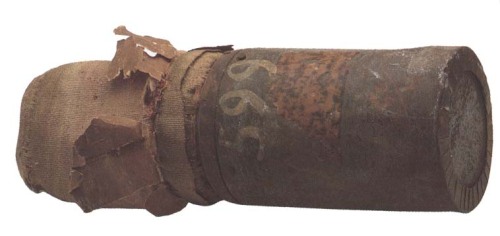
Effects of Canister Shot in the Civil War
This skull was discovered in 1876 on Morris Island, South Carolina, near the site of Battery Wagner, a powerful earthwork fort that had protected the entrance to Charleston Harbor during the Civil War.
The skull belonged to a man of African descent—a soldier of the famous 54th Massachusetts Volunteers, which had led the assault on Wagner on the night of July 18, 1863. Of approximately 600 men who made the charge, 256 were killed, wounded, or missing.
From the size of the wound, and the remains of the projectile itself, it can be determined what type of munition hit this man: an iron canister ball from one of two field howitzers known to have been used in the repulse of that attack.
Had the 54th charged straight ahead, it would have been up and over and right into the heart of the fort. Unfortunately, commander Colonel Robert G. Shaw led the regiment to the left, against the lower, but heavily defended, center of the wall. Besides the four 32-pounders directly ahead, the mass of attacking men was subject to enfilading fire from the two recovered field howitzers above them. The regiment clung to the face of the fort for almost an hour, but eventually had to retire. Approximately 6000 more Union troops eventually were thrown into the battle to no avail. Wagner remained in Confederate hands for another four months, then was evacuated when its purpose had been achieved.
Source Credit: http://www.medicalmuseum.mil/index.cfm?p=exhibits.canistershotcivilwar.index This Web site provides an introduction to the National Museum of Health and Medicine (NMHM) and contains official Government information. Its use is intended for members of the general public, news media and Army Medical Department beneficiaries.
Second Photo: Confederate 12 lb Canister Round.
crescentmoon06: by Tony Goran

erikkwakkel: Broidery on a medieval page Holes in the pages of...



Broidery on a medieval page
Holes in the pages of medieval books are common. They were easily made (by the parchment maker's knife), as in this wonderful case. Fixing it by stitching the hole together with strings of parchment is also common: parchment makers did it all the time, leaving behind "scars" on the page. What is totally unusual, however, is the repairs seen in this 14th-century book in Uppsala, Sweden. The damage is repaired, or at least masked, by good old broidery. It was done by the nuns who purchased the book in 1417. It is delightful to think that they took the effort to make a medieval hole disappear by replacing it with patterns like this, made up from pieces of silk in the most vivid of colors.
Pics: website of University Library Uppsala. More information about the preservation of this manuscript here.
visitheworld: The rock palaces of Wadi Dhar, Yemen (by...

The rock palaces of Wadi Dhar, Yemen (by ana_71061).
medievalvisions: Medieval minnekastchen.
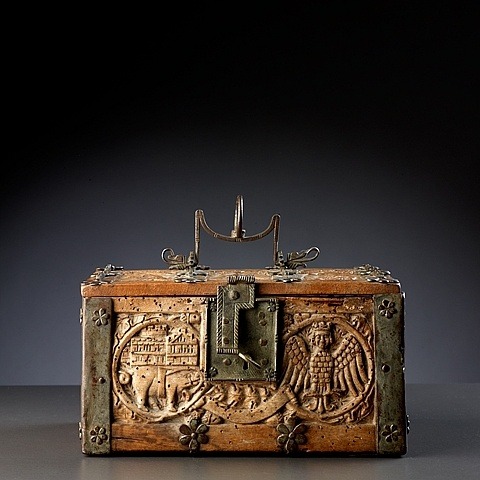
Medieval minnekastchen.
centuriespast: Unknown, possibly German or Austrian Spice...
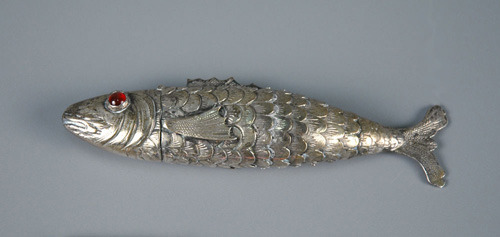
Unknown, possibly German or Austrian
Spice container (besamim, fish form), 1800s
German Metalwork
Silver, glass
Memorial Art Gallery
unnaturalist: A bezoar is a mass found trapped in the human...

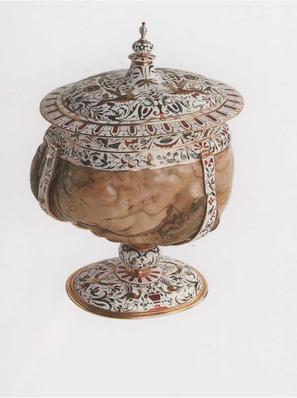
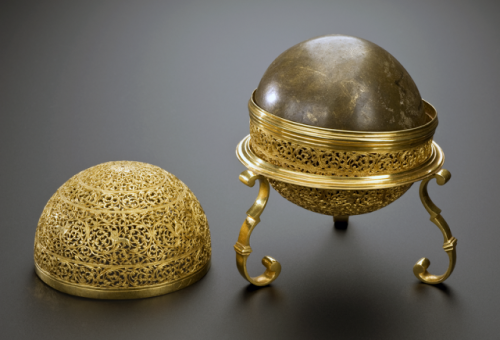

A bezoar is a mass found trapped in the human body, usually the gastrointestinal system, like a kidney stone or something, that can be organic or inorganic (sometimes with hair). Bezoars became highly prized back in the Renaissance days when the upper crust people were poisoning each other for power right and left. The Bezoars were thought to be magical and it was believed that putting a bezoar in your drinking glass or food would neutralize the poison. As a result bezoars were quite expense and made into necklaces, rings, goblets …
There is a famous story that in 1575 a surgeon devised an experiment to test the properties of the bezoar stone. It happened that a cook at King's court was caught stealing fine silver cutlery and was sentenced to death by hanging. The cook agreed to be poisoned instead. The surgeon used the bezoar stone to no great avail, as the cook died in agony seven hours later.
Even more interesting, in tests at the Scripps Institute in modern times, it was discovered that the bezoars actually DO work as an antidote to arsenic, just not all poisons.
just-a-little-history: Healing Scroll Date: 18th–19th century...
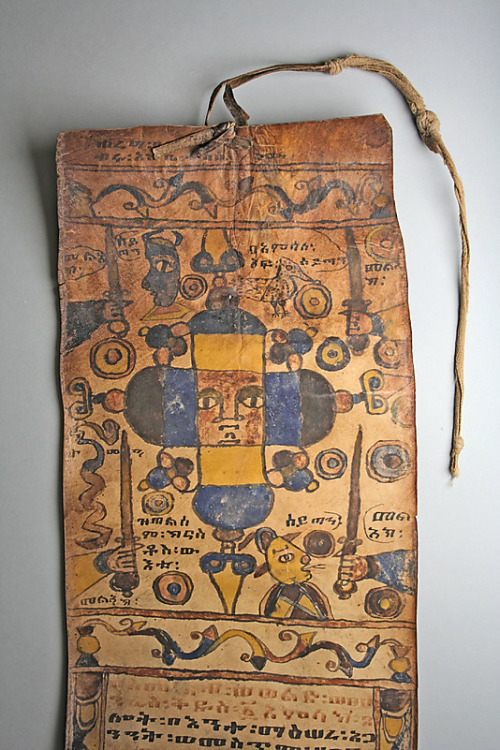


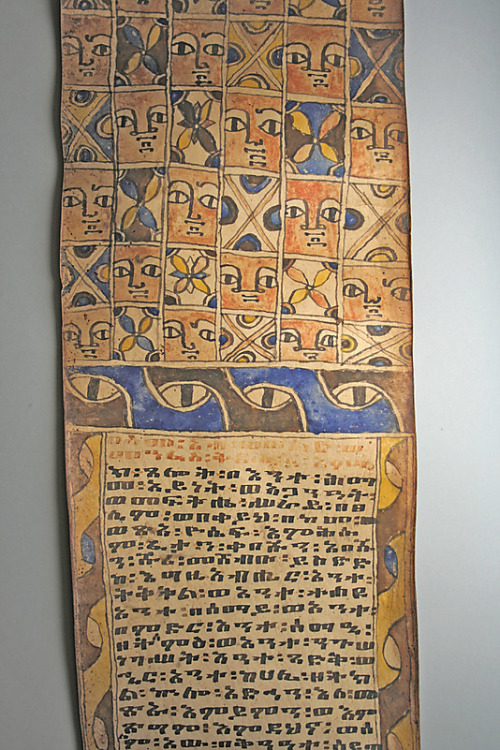


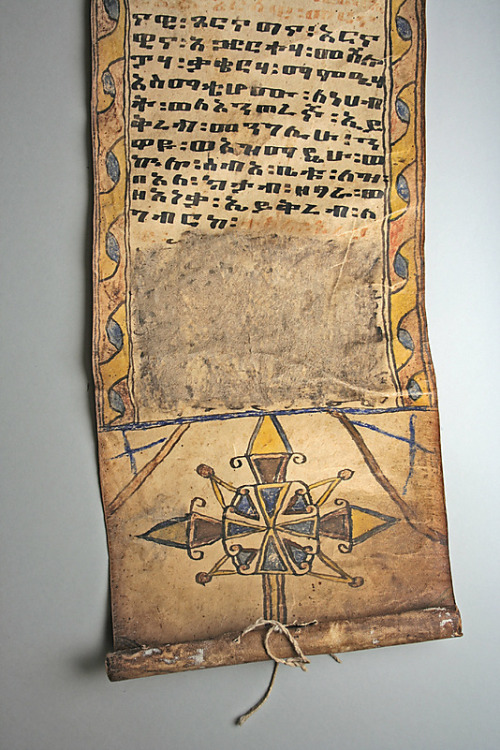
Healing Scroll
Date: 18th–19th century Geography: Ethiopia, Tigray region Culture: Tigray region Medium: Parchment, ink, pigments, cotton
In Ethiopia customized protective scrolls that interweave sacred imagery with textual prayers have been prescribed by traditional healers for over two thousand years. These were carried on the person of the individual to whom they were specifically dedicated to shield them from harm.
Often the customized content of a scroll is astrologically determined. In Ethiopia as in ancient Greece, each human being has a corresponding zodiac sign associated with a particular destiny and talismanic character. The iconography of the scrolls thus alternate between talismanic "seals" and representations of saints, angels and archangels shown in the act of fighting demons. The seals are modeled on the seal of God that was revealed to King Solomon and feature geometric patterns intertwined with stylized representations of multiple visages and eyes that indicate prayers for divine intervention.Source http://www.metmuseum.org/collections/search-the-collections/50015433?rpp=20&pg=1&gallerynos=351&ft=*&img=5
thegetty: This is a 2400 year old marble Pelican's Foot. Yep....
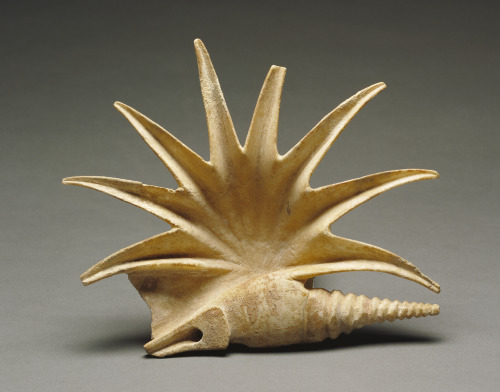
This is a 2400 year old marble Pelican's Foot.
Yep. Sculpted in marble. Of a Mediterranean shell called Pelican's Foot.
This 9 inch wide and highly detailed reproduction of a shell is a mirrored and much larger version of an actual specimen found on the Grecian coast. This particular sculpture has been hollowed out for libations for religious worship.
Offering vessel in the shape of a seashell, about 425 B.C., Greek, Marble, J. Paul Getty Museum.
artemisdreaming: Girl with bird (firozjuma-com...

Girl with bird (firozjuma-com via gutenberg.com)
ancientart: Ceremonial cylinder vessel: court scene. Maya...

Ceremonial cylinder vessel: court scene. Maya culture, Mexico Classic. Dates to between circa 600 and circa 900, made of polychrome earthenware.
Photo courtesy & taken by Marie-Lan Nguyen. From the Collection of Henry Law, via Wiki Commons.
bitchinbarbarians: Dunrobin Stone
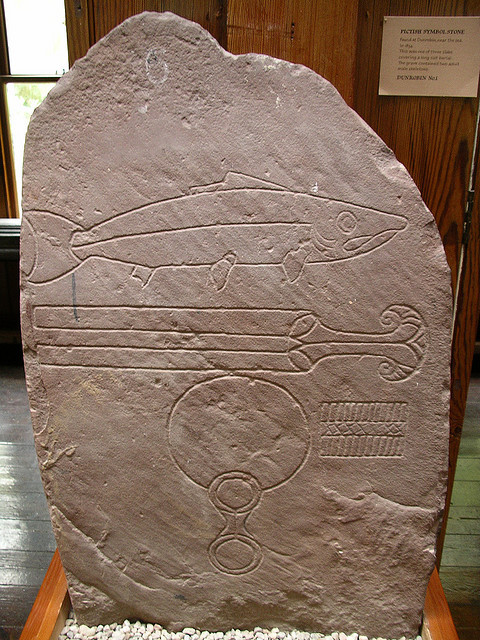
ancientart: Axe blade with the name of Adad-nirari I, Kassite...

Axe blade with the name of Adad-nirari I, Kassite period. from 1307 until 1275 BC, made of bronze.
Courtesy & currently located at the Louvre, France. Photo taken by Marie-Lan Nguyen.
historysquee: The Melville Bed This bed was made in 1700 for...
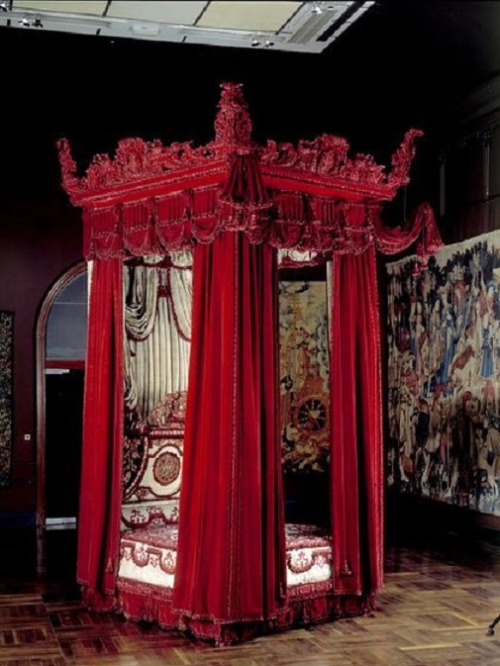
The Melville Bed
This bed was made in 1700 for George Melville for the State Bedroom at his home of Melville House in Scotland. George Melville was William III's Secretary of State for Scotland, Keeper of the Privy Seal and President of the Council. This meant that he had State Rooms created to show his position of power, as someone who was high enough to expect to house the King if he travelled nearby. However, William III never visited Scotland and as such, this lavish state bed was never used.
forgottenancients: Gold necklace, late bronze age, about...
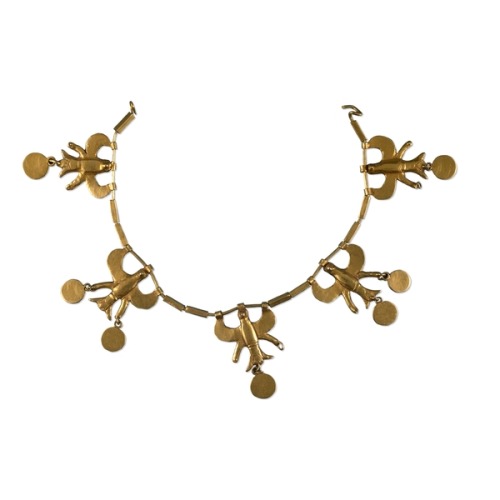
Gold necklace, late bronze age, about 14th-13th centuries BC. Probably from western modern Turkey
http://www.britishmuseum.org/explore/highlights/highlight_objects/me/g/gold_necklace.aspx
quatemases: Parade Helmet à l'antique, French, ca. 1620-1630
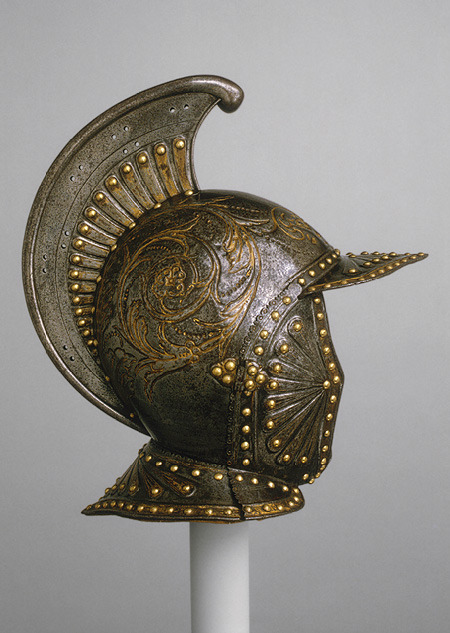
Parade Helmet à l'antique, French, ca. 1620-1630
"Times are bad. Children no longer obey their parents and everyone is writing a book."
"Times are bad. Children no longer obey their parents and everyone is writing a book."-
Cicero, circa 43 BC (via amandaonwriting)
"The recency illusion is the belief or impression that something is of recent origin when it is in fact long-established."
(via cimness)














Silver Gold Bull is a highly reputable bullion dealer. They will provide you with competitive, up-to-minute prices and they will ensure that your precious metals are delivered to your door discreetly and fully insured.
ReplyDelete